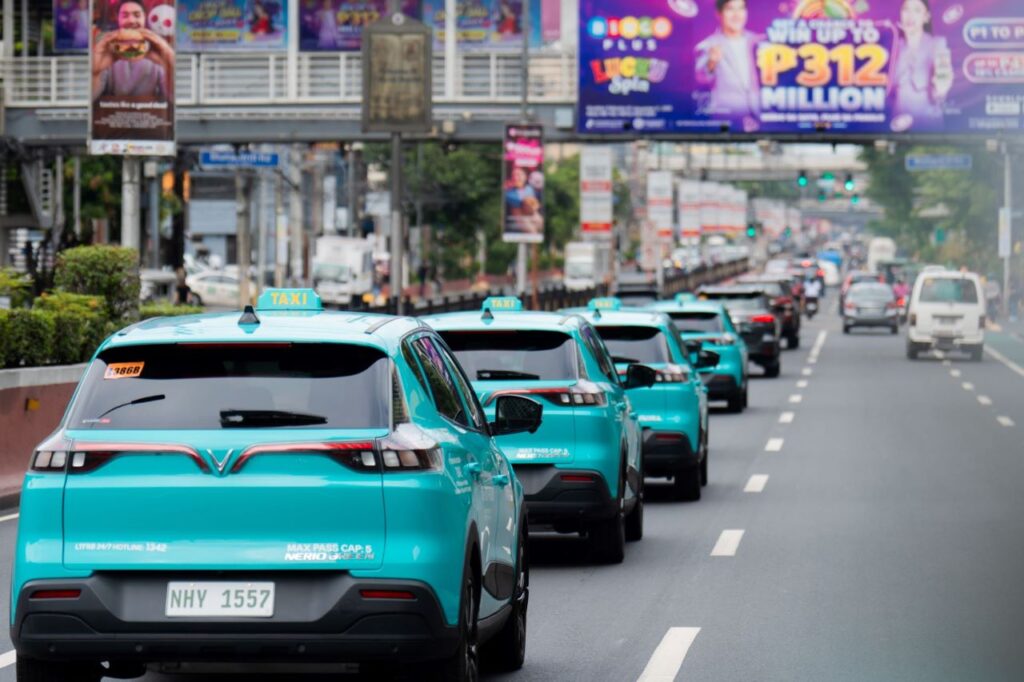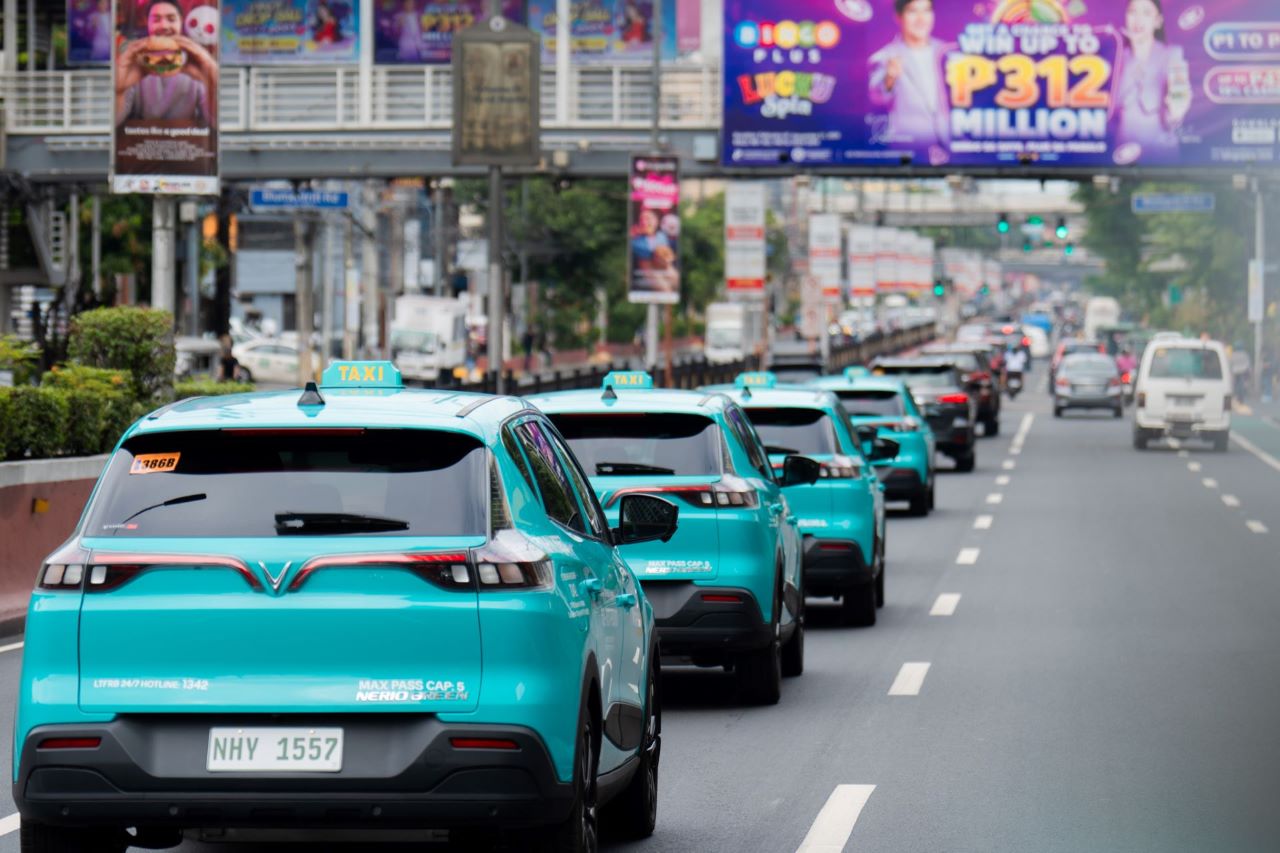In Metro Manila, the quiet hum of Green GSM’s VinFast-made electric taxis is turning electric mobility from an abstract idea into an everyday experience, making the shift to cleaner transport feel ever more familiar.

For many people in Metro Manila, electric mobility isn’t being introduced through car showrooms or policy speeches. It’s showing up on the street, in the form of blue-and-green VinFast-made electric taxis operated by Green GSM, the Philippines’s first all-electric ride-hailing service. Ever since their launch in June, these vehicles have started to appear in daily traffic, offering riders a small glimpse of what quieter, cleaner travel could feel like.
The first few minutes of the first trip are often filled with curiosity. Some passengers ask how far the car can go before it needs charging or if it costs more to drive. Others are surprised that it feels just the same, but different… in a good way.
Drivers say those questions have become part of their routine. Many were trained to explain the basics of electric vehicles, though most conversations unfold naturally. “I feel less tired, the costs are lower, and I take home more earnings,” said Tarwin S., 51, a former gasoline taxi driver who now works with Green GSM.
In a city where air quality and congestion are constant concerns, even a few minutes of quiet travel can shift perception. And because people tend to trust what they experience directly, a single ride can make the idea of using or owning an electric vehicle seem less distant.
Cities elsewhere have seen a similar process play out. In several cities in China, for example, local governments began by electrifying public taxis and buses. Millions of residents became accustomed to the sound (or the lack of it) of electric transport long before private buyers arrived. Manila’s growing fleet of Green GSM taxis seems to follow a comparable pattern, showing that
sometimes familiarity is the first step toward acceptance.
The Infrastructure of Confidence
Yet curiosity alone doesn’t sustain a new market. For electric vehicles to become a lasting part of the transport system, the technology needs visible and dependable support behind the scenes.
Newcomer VinFast from Vietnam is working to make that happen. While the taxis introduce the concept on the road, VinFast focuses on the infrastructure that allows EVs to operate with ease through its collaboration with strategic partners.
The company’s plan can be described in one word: ecosystem. It’s working with the global EV charging station developer V-Green toward the goal of about 15,000 charging ports. It’s also aiming for a growing number of dealerships and authorized service centers. These efforts address the everyday doubts that often prevent people from considering an electric car.
When chargers are easy to find, range anxiety fades. When technicians are trained, repairs stop feeling uncertain. When financing is made available, such as through agreements with local banks, ownership begins to look realistic.
The presence of charging stations in malls, offices, and highways also sends a quiet message of permanence. People notice them while shopping or commuting. What was once a policy discussion is becoming something visible, a sign that the system is gradually taking shape.
This build-out complements the government’s Electric Vehicle Industry Development Act (EVIDA), which encourages cleaner transport and lower emissions. Each new charging site also creates work for electricians, engineers, and software specialists. The benefits spread beyond transport, linking clean technology to local jobs and skills.
Change rarely happens quickly, and the shift toward electric transport will likely grow in small, steady steps rather than dramatic leaps. Still, every functioning charger, every trained ride-hailing driver, every quiet trip through traffic adds to a growing sense that this new form of mobility belongs in everyday life.
In time, the most convincing sign of progress may not be found in statistics or announcements. It may be heard—or not heard—in the city’s changing soundscape, where the familiar noise of engines gives way to something gentler. That kind of silence doesn’t declare a revolution. It simply suggests that one might already be underway.

